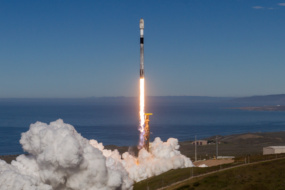In 2024, US (*ahem, SpaceX*) launch numbers grew, while China, Russia, and Europe plateaued. Jonathan McDowell compiled the following data in his annual 2024 space activity report.
US (SpaceX): Of the 145 US launches, SpaceX accounted for 138—a staggering 95% of America’s rides to space:
- 132 Falcon 9 (1 failure)
- 2 Falcon Heavy
- 4 Starship (near orbit flights)
US (Non-SpaceX): Rounding out the remaining US launches are:
- 2 ULA Atlas V launches (including Starliner CFT)
- 2 ULA Vulcan launches (including its maiden flight)
- 1 ULA Delta IV (retirement)
- 1 Rocket Lab Electron (launched out of the US)
- 1 Firefly Alpha
Notably, Blue Origin’s New Glenn rocket did not debut last year—that will have to wait until early 2025.
Europe: Europe notched just three launches last year, positioning them behind countries like Japan, India, and Iran on the launch leaderboard. But help is on the way. In 2024, Ariane 6 made its long-awaited grand entrance into the rocket world, and Vega C nailed its return to flight just months after the legacy Vega’s retirement flight, setting the stage for a slight European flight cadence rebound in 2025.
New Zealand: It’s about time we put some respect on the Kiwis’ name and give New Zealand its own category. 13 out of Rocket Lab’s 14 launches were from the Māhia Peninsula on New Zealand’s north island.
China: China launched 68 times in 2024, slightly up from 67 flights in 2023 and 64 in 2022. The Long March 2D rocket launched nine times, the most flown by a Chinese rocket. Galactic Energy’s Ceres-1 led China’s commercial launch sector with five launches.
+ Commercial: Commercially operated rockets were responsible for 70% of global launch attempts in 2024, up from 65% in 2023 and 55% in 2022.




